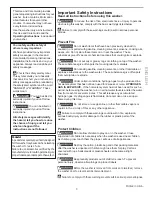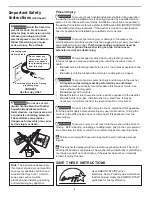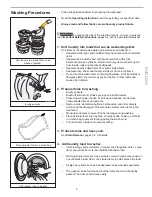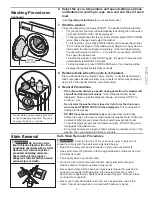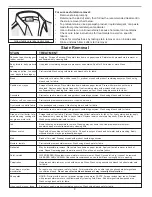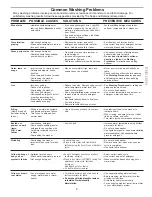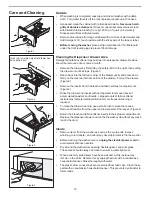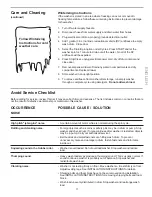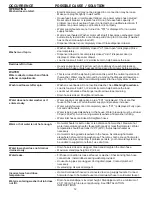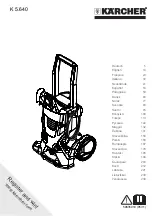
11
ENGLISH
Care and Cleaning
(continued)
Winterizing Instructions
If the washer is stored in an area where freezing can occur or moved in
freezing temperatures, follow these winterizing instructions to prevent damage
to the washer:
1.
Turn off water supply faucets.
2.
Disconnect hoses from water supply and drain water from hoses.
3.
Plug electrical cord into a properly grounded electrical outlet.
4.
Add 1 gallon (3.8 L) nontoxic recreational vehicle (RV) antifreeze to empty
wash drum. Close door.
5.
Select the Drain/Spin option under Cycles. Press START and let the
washer spin for 1 minute to drain out all the water. No all of the RV
antifreeze will be expelled.
6.
Press Stop/Clear, unplug electrical power cord, dry off drum interior and
close door.
7.
Remove dispenser drawer. Drain any water in compartments and dry
compartments. Replace drawer.
8.
Store washer in an upright position.
9.
To remove antifreeze from washer after storage, run empty washer
through a complete cycle using detergent. Do not add wash load.
Follow Winterizing
Instructions for cold
weather care.
Avoid Service Checklist
Before calling for service, review this list. It may save both time and expense. The list includes common concerns that are
not the result of defective workmanship or materials in this washer.
• A certain amount of motor whine is normal during the spin cycle.
• Foreign objects such as coins or safety pins may be in drum or pump. Stop
washer and check drum. If noise continues after washer is restarted, objects
may be in pump. Call your authorized servicer.
• Belt buckles and metal fasteners are hitting wash drum. To prevent
unnecessary noise and damage to drum, fasten fasteners and turn items
inside out.
• Washer is overloaded. Do not overload washer. Stop washer and reduce
load.
• Heavy wash loads may produce a thumping sound. This is usually normal. If
sound continues, washer is probably out of balance. Stop washer and
redistribute wash load.
• Washer is not resting firmly on floor. Move washer so it rests firmly on floor.
Adjust leveling legs. See INSTALLATION INSTRUCTIONS for details.
• Shipping bolts and foam block have not been removed during installation.
See INSTALLATION INSTRUCTIONS for removing shipping bolts and foam
block.
• Wash load unevenly distributed in drum. Stop washer and rearrange wash
load.
High pitch "jet engine" noise.
Rattling and clanking noise.
Squealing sound or hot rubber odor.
Thumping sound.
Vibrating noise.
NOISE
POSSIBLE CAUSE / SOLUTION
OCCURRENCE


